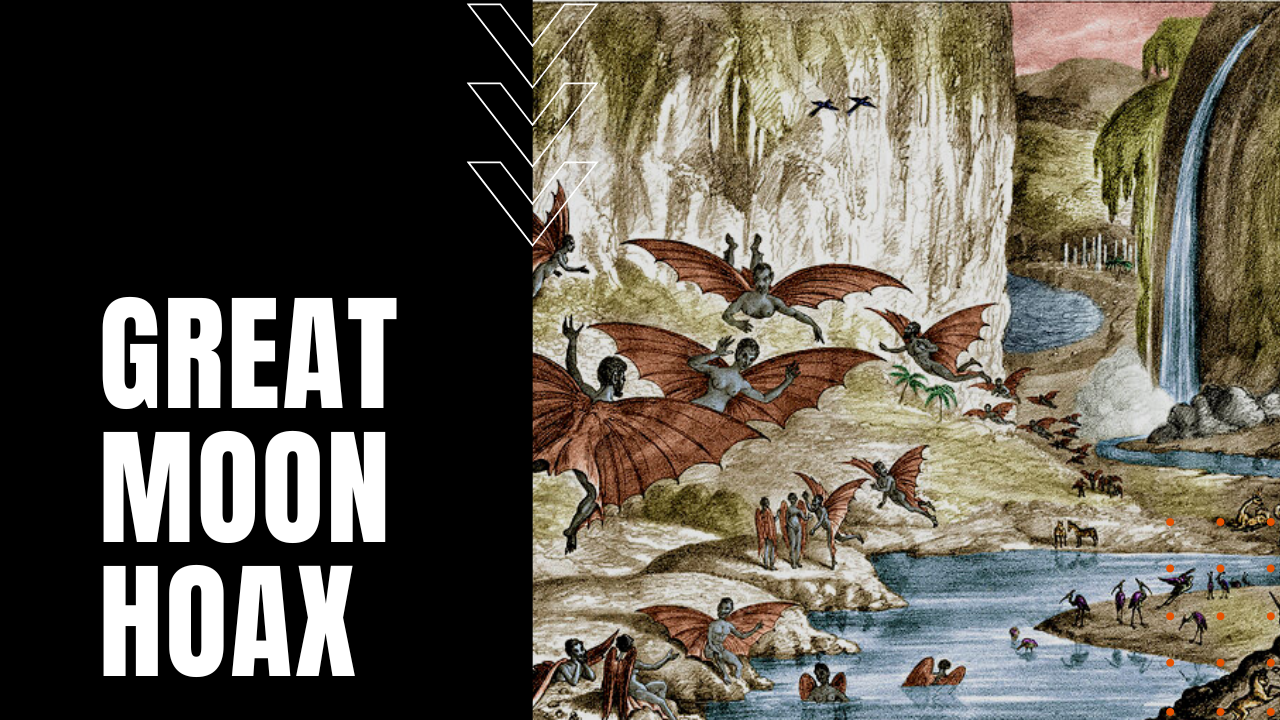Great Moon Hoax of 1835

On August 25th, 1835, the first of six articles published in the New York Sun newspaper—a penny press that thrived on yellow journalism—published a jaw-dropping discovery of abundant life on the moon.
Dr. Andrew Grant’s Great Moon Hoax
Known collectively as “The Great Moon Hoax,” the stories were purported written by Dr. Andrew Grant, described as a colleague of the famous astronomer Sir John Herschel, who in turn witnessed a plethora of life forms on the moon after he installed a new high-power telescope in Cape Town South Africa.
Supposedly reprinted from the Edinburgh Journal of Science, the articles described the existence of fantastic animals such as unicorns, two-legged beavers and winged humanoids covered in a downy coat of fur, at the same time describing the moon’s geography of massive craters, giant amethyst crystals, lush vegetation and raging rivers of pristine water.
Great Moon Hoax Goes Global
Founded in 1833, the New York Sun’s circulation skyrocketed over Dr. Grant’s vivid descriptions of life on the moon, and as the stories spread around the globe, excitement exploded as readers lapped up the mystifying new evidence of an abundance of lunar biology, but as more discerning minds began to pick apart the evidence, the massive hoax began to unravel.
First on the scam meter was the Edinburgh Journal of Science, which had ceased publication many years earlier, while Dr. Grant proved to be a nonexistent and quite fictional character. Most likely written by Cambridge-educated yellow journalist, Richard Adams Locke, the articles were intended to poke fun at earlier speculations about life on the moon. Popular science writer Reverend Thomas Dick, claimed in his bestselling books that the moon was home to 4.2 billion inhabitants.
Failing to recognize the satire, Sun readers became openly hooked by the stories, even fooling a group of Yale University scientists who traveled to the Sun’s New York City office in search of the Edinburgh Journal articles in question. Sun employees shunted the scientists back and forth between offices and departments to discourage them from discovering the truth, sending them back to New Haven without the slightest knowledge that they had been duped.
An Admission From New York Sun
Finally, on September 16th, 1835, the New York Sun newspaper at long last admitted that the articles by Dr. Grant were a hoax, and while readers were for the most part amused by the whole affair, sales of the New York Sun remained robust and highly profitable, making the Great Moon Hoax of 1835, another fish story in man’s eager willingness to believe in the unbelievable.
